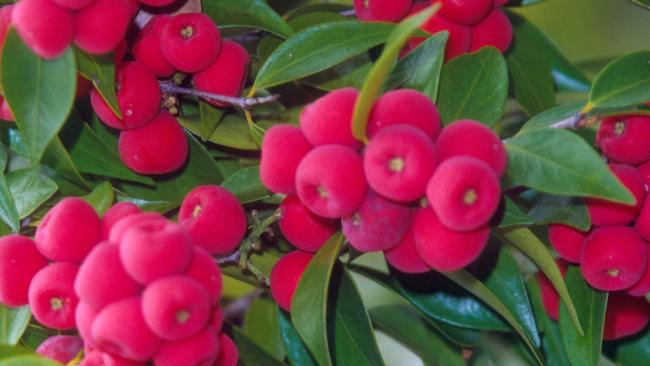Lillypilly psyllids, pruning wisterias, planting onions and dwarf peach
Gardening questions answered: lillypilly psyllids, pruning wisterias, planting onions and how to mature a dwarf peach.

My lillypilly has severely deformed leaves from psyllids this year, and is covered in black scale. Should I treat it or remove it? - RAE EASTERN, QUEENSLAND
Pimple psyllid affects the new growth of certain lillypillies, which will always be attacked each year. As effective treatment involves systemic insecticides that harm bees, I think it’s better to grow ones that don’t get this pest. Psyllid-resistant varieties are now widely grown and sold. Heavy scale attack indicates plants are under stress or unhealthy. Remove and replace with a better plant. Syzygium ‘Cascade’ is one of the most pest-free lillypillies.
Last summer I pruned my overgrown wisteria very heavily. This spring there were no flowers but lots of shoots from each cut. Should I reduce the number of shoots? Will it flower next year? - WENDY MORGAN, TAMBORINE MOUNTAIN, QUEENSLAND
That’s a normal response to heavy pruning. You can select some shoots to train as replacement branches and remove others to reduce congestion, or cut them back to six leaves so they flower in the future. It may be two or three years before full flowering resumes.
In our cool mountain area I plant my onions on April 1. This year they produced a lot of seed heads. Are there varieties that don’t do this, or ones suited to this area? - IRENE HOARE, YARRA VALLEY, VICTORIA
Onions usually grow leaves and bulbs in their first year, then flower and seed in their second. It’s critical to sow the right variety, at the right time, for your climate. Premature flowering occurs when grown out of season. In cool climates, sow seed of early, mid-season and late varieties in succession from April to August. They take six to eight months to harvest. Yates ‘Early Barletta’ and ‘Hunter River White’ are early types; ‘Brown Spanish’ is a good late variety.
My dwarf peach in a large pot blossoms spectacularly each year, followed by setting fruit. They grow slowly for a few months then fall off or mummify at half size. How can I get them to maturity? - ROSE PATER, BY EMAIL
Mummified fruit indicate the fungal problem brown rot, which commonly affects stone fruit. To prevent this, spray with a copper fungicide at bud swell. Promptly remove affected fruit or diseased twigs. Water stress could also cause fruit drop. Re-pot next autumn, using best quality potting mix.
FLORA:I’ve been growing the pretty perennial Phlox ‘Minnie Pearl’ in my garden for several years now and have been impressed with its performance. Perennials such as this that suit colder climates often do poorly in sub-tropical Sydney but I’ve found it free of any pests or diseases, long flowering and great for picking. It’s spanking white but ‘Minnie Pink’ is now available. Both grow to 40cm and spread slowly to about 60cm wide. The flowers start in spring but will keep producing blooms through to autumn if cut back by half and fertilised after each flush. They attract butterflies and other pollinators, and are lightly scented. More at pga.com.au.
Send your questions to: helenyoungtwig@gmail.com or Helen Young, PO Box 3098, Willoughby North, NSW 2068. Website: helenyoung.com.au. The best question for November wins the indispensable new 44th edition of Yates Garden Guide ($40) plus $40 worth of Yates organic seeds and garden products.



